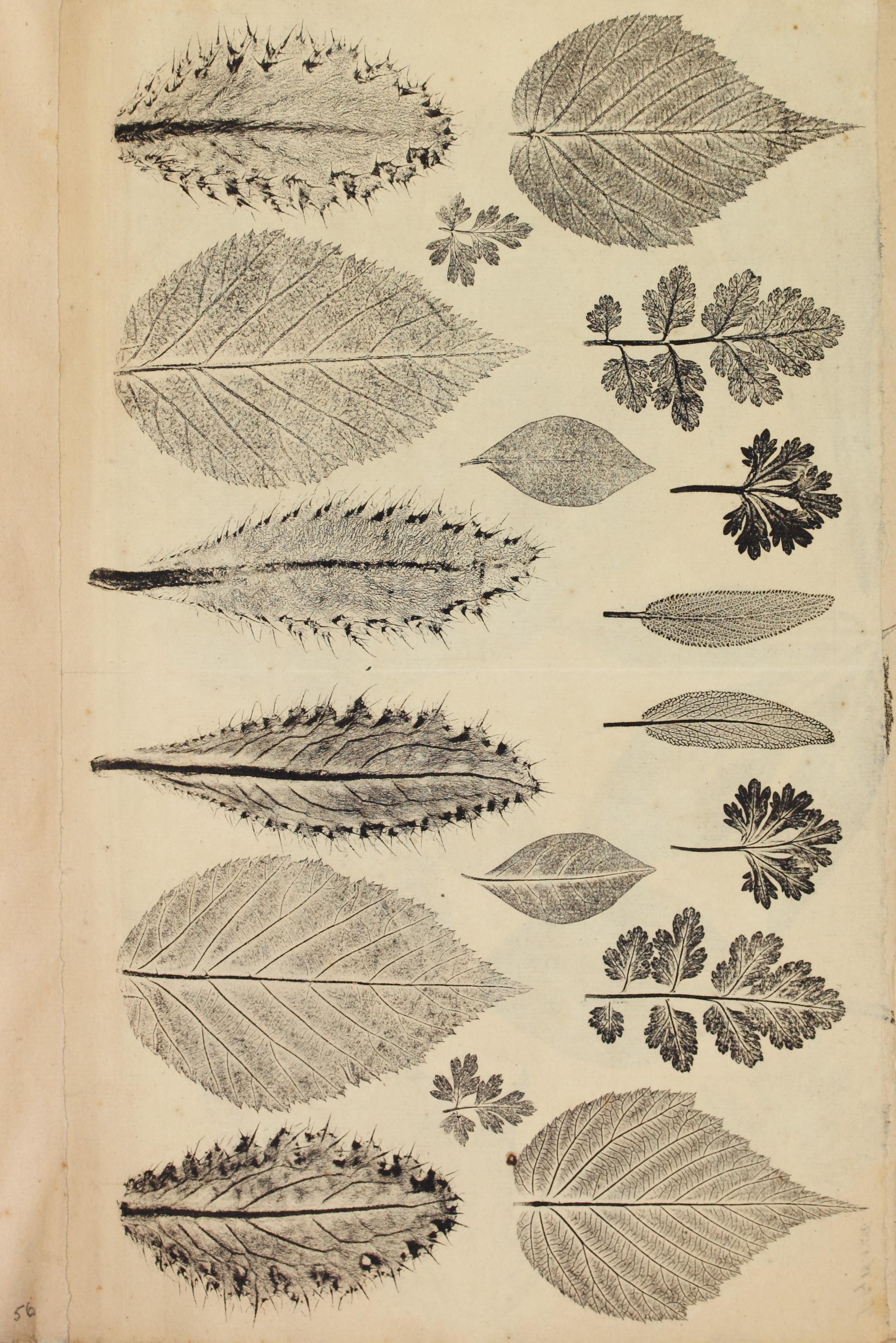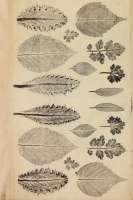Abstract
Figure 1 Joseph Breintnall. Nature Prints of Leaves, July 18, 1736. The Library Company of Philadelphia.
Joseph Breintnall. Nature Prints of Leaves, July 18, 1736. The Library Company of Philadelphia.
Jennifer L. Roberts examines nature-printed paper currency developed in the 1730s by Benjamin Franklin, in collaboration with the botanist Joseph Breintnall. In the decades following their experiments, much of the paper money circulating through the mid-Atlantic colonies would feature elegant prints of maple, sage, parsley, blackberry, and other leaves. Because the leaves’ delicate and random vein structures could not be engraved by hand, they served as effective anti-counterfeiting protection. Roberts contends that liquid intelligence informed these notes at every level: from the veins as natural structures for the movement of moisture through the leaf to the economic “circulation” enabled by paper currency, and on to the liquidities that determine the constitutive acts of printing itself (the casting in liquid metal and plaster needed to mold the leaf matrices to the channeling of liquid ink). Franklin’s notes, Roberts proposes, stand poised on the edge of a fundamental ambiguity within the concept of liquidity as both a fluid activity beyond the grasp of rational systems and a state of controlled, predictable financial convertibility.



